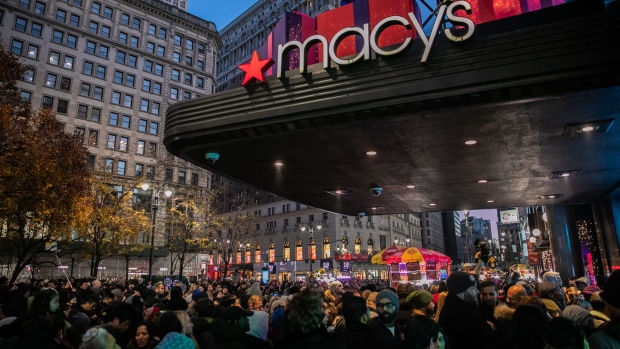Jan 8, 2020
Macy's Still Has a Lot of Work to Do
, Bloomberg News

(Bloomberg Opinion) -- Give Macy’s Inc. a polite clap, and no more, for kicking off the retail holiday reporting season in reasonable style.
The department store giant said Wednesday that like-for-like sales from company-owned stores fell 0.7% in November and December, compared with the year earlier period. That’s by no means stellar, but it was much better than its dismal third quarter, when same-store sales sank 3.9% and the company cut its profit forecast, leaving some investors to wonder whether its slew of turnaround efforts would ever be enough to revive an aging, challenged business.
Fortunately for Macy’s, it looks like some of its initiatives — particularly revamping its top-performing stores and ramping up its online selection — did attract shoppers over the crucial holiday shopping period. The company said its digital business and the 150 stores that it has updated performed well. Investors reacted enthusiastically at first, sending Macy’s shares up as much 5 percent in early trading Wednesday, before tempering their optimism; the stock gave up most of its gains by mid-morning.
That more measured response sounds right. True, the holiday performance was an improvement on the dire third quarter. But same-store sales were still negative. Macy’s must get back to increasing comparable sales and sustain this trend for investors to be convinced that its actions are paying off.
There is no let up in the pressures facing department stores, which have been struggling to adapt to changing shopping habits while facing increasing competition from rivals that range from e-commerce giant Amazon Inc. to discount players such as TJX Cos., the corporate parent of TJ Maxx. Even Associated British Foods Plc’s Primark is making headway in the U.S.; its cheap chic is a challenge to mainstream clothing retailers and the off-price sector alike. All this comes as the consumer has remained relatively robust. Any retrenchment would make conditions even more difficult.
Much will now rest on Macy’s investor day on Feb. 5. My colleague Sarah Halzack has argued that the strategy to be presented should include more store closures, and Macy’s has delivered this early. It said on Wednesday that it would be closing another 28 of its namesake outlets and one Bloomingdale’s. This builds on the 100 shutterings since 2016, and is the right strategy. But it may still not go far enough. At the end of the third quarter, the group had about 680 department stores under the Macy’s and Bloomingdale’s brands. That makes the strategic blueprint for reviving same-store sales growth even more crucial.
Macy’s shares are down more than 40% over the past year, and trade on a forward price earnings ratio of about 7.5 times, a more than 30% discount to the Bloomberg Intelligence North American department store valuation peer group. To narrow the gap, Macy’s must show that its better-than-feared holiday showing isn’t another false dawn.
To contact the author of this story: Andrea Felsted at afelsted@bloomberg.net
To contact the editor responsible for this story: Beth Williams at bewilliams@bloomberg.net
This column does not necessarily reflect the opinion of the editorial board or Bloomberg LP and its owners.
Andrea Felsted is a Bloomberg Opinion columnist covering the consumer and retail industries. She previously worked at the Financial Times.
©2020 Bloomberg L.P.





